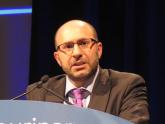Conference Coverage

First-line avelumab/axitinib for RCC benefits wide range of patients
SAN FRANCISCO – Subgroup analyses of the JAVELIN Renal 101 trial show that first-line avelumab/axitinib yields better PFS and ORRs than sunitinib...
Angela Yuen is a Clinical Infusion Pharmacist at University of California San Diego Health Moores Cancer Center, and Bailey Crandall is an Oncology Clinical Pharmacy Specialist at the VA San Diego Healthcare System.
Correspondence: Bailey Crandall (bailey.crandall@va.gov)
Primary outcomes included incidence of CV events and time to first CV event after initiation of TKI therapy. Secondary outcomes included changes in ECG or echocardiogram results at 0, 1, 3, 6, and 12 months. Secondary outcomes at scheduled time points were not readily available for every patient, but any available time points were gathered to aid in identifying an optimal period for cardiac monitoring. In addition, patients with a history of CVD were evaluated for adherence to common first-line therapies for each disease.
A Fischer exact test was used to compare the incidence of CV events in patients with and without a history of CVD (significance level, α = 0.05). A subgroup analysis was used to compare the incidence of CV events in patients who experienced a CV event (significance level, α = 0.05). A Kaplan-Meier survival curve was used to determine time to first CV event. A log-rank test with significance level set at α = 0.05 also was used.
An initial database search identified 134 patients who received TKI therapy at VASDHS between December 1, 2005 and July 31, 2017. According to retrospective chart review, 54 patients met the inclusion criteria for the study (Table 1).
Patients without a history of CVD (17%) did not experience any CV events while on TKI therapy. Of the patients with a history of CVD, 9 (20%) experienced ≥ 1 CV event. Fifty-five percent of the events experienced were hypertension. One patient experienced QTc prolongation, and 2 patients experienced MI. As already noted, each new start of TKI was recorded as a separate event, regardless of previous TKI therapy. Among patients with a history of CVD, 2 experienced 2 CV events. Overall, 11 CV events occurred among patients who received ≥ 1 TKI, corresponding to an overall incidence of 24% (Table 2).
Most CV events occurred within the first 6 months of therapy, with median time to first CV event of 2 months (Figures 1 and 2). Median duration of therapy for these patients was 6 months. All CV events occurred within the first year of therapy (Figures 3 and 4), except for 1 event that occurred at 28 months. A review of the charts of the 11 patients who experienced a CV event revealed that 1 patient was adherent to prior CV therapy, 5 patients were not adherent, and 5 patients had not been on any prior CV therapy.Of the 13 patients who were exposed to ≥ 2 TKI therapies, 2 experienced a CV event. Both patients were started on sunitinib and were switched to sorafenib. One of these used sunitinib for 7 months, experienced a partial response and was switched to sorafenib (with a 3-month break between therapies). The second patient was on sunitinib for 24 months, with multiple doses held because of low blood counts and diarrhea. While on sunitinib, this patient experienced a HF exacerbation, determined to be caused by the underlying disease. This event occurred 17 months after sunitinib was started, and therapy was continued for another 7 months. The patient was switched to sorafenib because of poor tolerability and disease progression. While on sorafenib, this patient experienced grade 1 QTc prolongation.

SAN FRANCISCO – Subgroup analyses of the JAVELIN Renal 101 trial show that first-line avelumab/axitinib yields better PFS and ORRs than sunitinib...

MUNICH – Avelumab and axitinib offered better progression-free survival than did sunitinib as first-line therapy for advanced renal cell carcinoma...

GLASGOW – A survey of chronic myeloid leukemia patients taking tyrosine kinase inhibitors (TKIs) revealed that more than one-third were taking...
